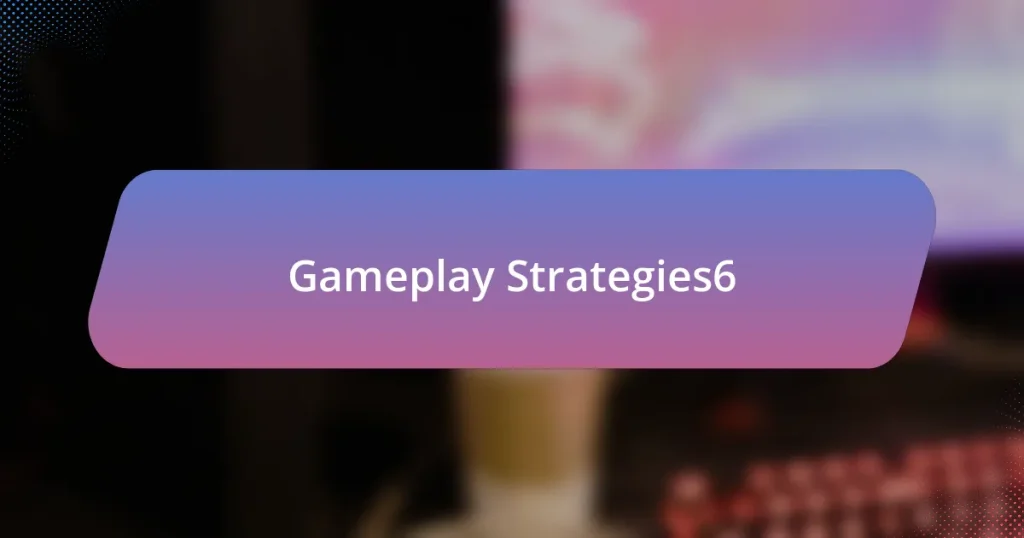Power spikes in combat situations are critical moments when a combatant or unit experiences a sudden increase in effectiveness, often due to resource availability, tactical advantages, or timing. This article explores how power spikes influence gameplay dynamics, the triggers for these spikes, and the importance of recognizing them for strategic decision-making. It also discusses methods for identifying enemy weaknesses during power spikes, effective strategies for exploiting these vulnerabilities, and best practices for managing one’s own power spikes. Understanding these concepts is essential for players aiming to enhance their performance and capitalize on opportunities in competitive environments.

What are Power Spikes in Combat Situations?
Power spikes in combat situations refer to moments when a combatant or unit experiences a sudden increase in effectiveness or capability, often due to factors like resource availability, tactical advantages, or timing. These spikes can occur when a player gains access to powerful weapons, abilities, or reinforcements, allowing them to dominate the battlefield temporarily. For example, in video games, a character may achieve a power spike after leveling up or acquiring a rare item, significantly enhancing their combat performance. Understanding these spikes is crucial for both offense and defense, as they can dictate the flow of combat and create opportunities for strategic exploitation.
How do Power Spikes affect gameplay dynamics?
Power spikes significantly influence gameplay dynamics by altering the effectiveness of champions or characters at specific points in the game. These spikes occur when a character gains new abilities, items, or levels that enhance their combat capabilities, allowing them to outmatch opponents temporarily. For instance, in games like League of Legends, a champion reaching level six often gains access to a powerful ultimate ability, which can shift the balance of power in skirmishes. This change prompts players to adapt their strategies, either by playing more aggressively to capitalize on their own power spike or by playing defensively to avoid confrontation during an opponent’s spike. Understanding these dynamics is crucial for players to exploit enemy weaknesses effectively, as timing engagements around these power spikes can lead to decisive advantages in gameplay.
What triggers a Power Spike in a game?
A power spike in a game is triggered by significant changes in a player’s capabilities, often due to acquiring new items, leveling up, or gaining abilities. These changes can enhance a player’s damage output, survivability, or utility, making them more formidable in engagements. For example, in many multiplayer online battle arena (MOBA) games, a champion may experience a power spike upon reaching a specific level or obtaining a key item, such as a damage amplifier or healing item, which can shift the balance of power in a match. This phenomenon is crucial for players to recognize, as it allows them to capitalize on their enhanced strength to secure objectives or engage opponents effectively.
How can players recognize the signs of an impending Power Spike?
Players can recognize the signs of an impending Power Spike by monitoring key indicators such as item completion, level advantages, and cooldown availability. For instance, when a player completes a significant item that enhances their abilities or stats, it often signals a Power Spike. Additionally, if a player reaches a new level that unlocks a powerful ability or increases their stats significantly compared to opponents, this also indicates a Power Spike. Furthermore, observing the cooldowns of enemy abilities can reveal opportunities; if an enemy has just used a powerful ability and it is on cooldown, they may be vulnerable, marking a potential Power Spike for the opposing team.
Why is it important to understand Power Spikes?
Understanding power spikes is crucial because they represent moments when an enemy’s capabilities are temporarily diminished, allowing for strategic advantages. Recognizing these fluctuations enables players to exploit weaknesses effectively, leading to successful engagements. For instance, in competitive gaming, understanding when an opponent is at their weakest—such as after using significant resources or abilities—can turn the tide of battle. This knowledge is supported by gameplay analysis, which shows that teams that capitalize on power spikes often achieve higher win rates.
What advantages do players gain from identifying Power Spikes?
Identifying Power Spikes provides players with strategic advantages that enhance their gameplay effectiveness. By recognizing moments when their champions or characters gain significant power, players can time their engagements, optimize resource management, and capitalize on enemy vulnerabilities. For instance, a player may choose to initiate fights or secure objectives when their character has just acquired a key item or level, maximizing their impact during that window of opportunity. This strategic timing can lead to decisive victories in skirmishes or team fights, ultimately influencing the outcome of the game.
How can understanding Power Spikes influence strategic decisions?
Understanding Power Spikes can significantly influence strategic decisions by enabling leaders to identify critical moments when an opponent is vulnerable. By analyzing historical data and patterns of behavior, decision-makers can pinpoint these spikes, which often correlate with resource depletion or tactical missteps. For instance, in military strategy, recognizing when an enemy’s forces are stretched thin allows for targeted offensives that can exploit this weakness, leading to a higher probability of success. This approach is supported by studies in conflict theory, which demonstrate that timing and resource allocation are crucial in gaining a strategic advantage.

How to Identify Enemy Weaknesses During Power Spikes?
To identify enemy weaknesses during power spikes, analyze their resource allocation and behavior patterns during these critical moments. Observing how opponents react to increased power can reveal vulnerabilities, such as overextension or reliance on specific abilities. For instance, if an enemy becomes overly aggressive during a power spike, they may expose themselves to counterattacks. Historical data from competitive gaming shows that teams often exploit these moments by coordinating attacks on overcommitted enemies, leading to advantageous trades or objectives.
What methods can be used to analyze enemy behavior?
Methods to analyze enemy behavior include data collection, pattern recognition, and psychological profiling. Data collection involves gathering intelligence through surveillance, reconnaissance, and open-source information to understand enemy movements and strategies. Pattern recognition utilizes algorithms and statistical analysis to identify trends and predict future actions based on historical data. Psychological profiling assesses the motivations, strengths, and weaknesses of the enemy, often using behavioral analysis techniques to anticipate decisions. These methods are validated by military strategies that emphasize intelligence and psychological operations, demonstrating their effectiveness in real-world scenarios.
How can players track enemy cooldowns and resources?
Players can track enemy cooldowns and resources by utilizing in-game timers, visual indicators, and third-party tools. In many games, cooldowns are displayed through visual cues such as icons or bars that indicate when abilities will be available again. Additionally, players can keep mental notes or use timers to track the duration of enemy abilities, especially during critical moments in gameplay. Third-party applications or overlays can also provide real-time information about enemy cooldowns and resource levels, enhancing situational awareness. This method is supported by the fact that many competitive players rely on these tools to gain an advantage, as evidenced by community discussions and guides that emphasize the importance of tracking enemy abilities for strategic decision-making.
What indicators suggest an enemy is vulnerable?
Indicators that suggest an enemy is vulnerable include signs of disorganization, reduced morale, and logistical challenges. Disorganization can manifest through erratic movements or failure to maintain defensive positions, indicating a lack of coordination. Reduced morale often becomes evident through decreased communication among troops or visible signs of fatigue and reluctance to engage. Logistical challenges may present as shortages of supplies or equipment, which can hinder operational effectiveness. Historical examples, such as the German Army’s struggles during the Battle of Stalingrad, illustrate how these indicators can signal vulnerability, leading to significant tactical advantages for opposing forces.
How can players exploit these weaknesses effectively?
Players can exploit weaknesses effectively by identifying specific power spikes in their opponents and capitalizing on them during moments of vulnerability. For instance, if an enemy champion lacks key abilities or items during a cooldown period, players should initiate engagements or ambushes to take advantage of this temporary disadvantage. Additionally, players can monitor enemy positioning and resource levels, such as health and mana, to determine optimal times for attacks. Historical data from competitive play shows that teams often secure objectives or initiate fights when opponents are at their weakest, leading to higher win rates in those scenarios.
What strategies can be employed during an enemy’s Power Spike?
During an enemy’s Power Spike, the most effective strategies include avoiding direct confrontation, applying pressure in other lanes, and coordinating team fights to exploit their overextension. Avoiding direct confrontation minimizes the risk of losing engagements when the enemy is at their strongest, as they typically have enhanced abilities or items that grant them an advantage. Applying pressure in other lanes can force the enemy to split their resources and attention, potentially leading to opportunities for your team to secure objectives or gain map control. Coordinating team fights allows your team to engage when the enemy is overextended or isolated, capitalizing on their momentary weaknesses. These strategies are validated by competitive gameplay where teams often prioritize objective control and map pressure during enemy Power Spikes to mitigate risks and maximize their own advantages.
How can teamwork enhance the exploitation of enemy weaknesses?
Teamwork enhances the exploitation of enemy weaknesses by allowing for coordinated strategies that capitalize on vulnerabilities more effectively than individual efforts. When team members communicate and share information, they can identify and target specific weaknesses in the enemy’s defenses, leading to more successful operations. For instance, during military campaigns, units that work together can create diversions, flank enemies, or concentrate fire on weak points, as demonstrated in historical battles like the Battle of Cannae, where Hannibal’s forces encircled and defeated a larger Roman army through superior coordination and teamwork. This collaborative approach not only increases the chances of success but also minimizes risks, as team members can support each other and adapt to changing situations in real-time.

What are the Best Practices for Managing Power Spikes?
The best practices for managing power spikes include implementing surge protection devices, conducting regular system assessments, and utilizing load management strategies. Surge protection devices, such as surge protectors and voltage regulators, help to absorb excess voltage and prevent damage to equipment. Regular system assessments identify vulnerabilities and ensure that systems are equipped to handle fluctuations. Load management strategies, including demand response programs, optimize energy consumption during peak times, reducing the likelihood of power spikes. These practices are essential for maintaining system integrity and operational efficiency.
How can players prepare for their own Power Spikes?
Players can prepare for their own Power Spikes by understanding their champion’s abilities and timing their item purchases effectively. This involves analyzing the power curve of their character, which indicates when they become significantly stronger due to level-ups or item completions. For instance, a player should aim to complete key items before engaging in fights, as this maximizes their effectiveness during critical moments. Additionally, players should practice positioning and map awareness to capitalize on their Power Spikes, ensuring they engage in fights when they have the advantage.
What resources should players prioritize during a Power Spike?
Players should prioritize gold and experience during a Power Spike. Gold allows players to purchase essential items that enhance their abilities and effectiveness in combat, while experience contributes to leveling up, unlocking stronger skills and increasing overall power. For instance, acquiring key items during a Power Spike can significantly shift the balance of power in a match, enabling players to capitalize on their enhanced capabilities against opponents who may not be as strong at that moment.
How can players communicate effectively with teammates during critical moments?
Players can communicate effectively with teammates during critical moments by using clear, concise verbal cues and non-verbal signals to convey important information quickly. Effective communication involves calling out enemy positions, coordinating strategies, and alerting teammates to changes in the game state, such as power spikes or potential threats. Research indicates that teams with established communication protocols perform better under pressure, as they can make faster decisions and execute strategies more efficiently. For instance, in competitive gaming, teams that utilize specific callouts and maintain a consistent communication style have been shown to achieve higher win rates, demonstrating the importance of effective communication in high-stakes situations.
What common mistakes should players avoid during Power Spikes?
Players should avoid overcommitting during Power Spikes, as this can lead to unnecessary deaths and lost advantages. Overcommitting occurs when players engage in fights or objectives without proper vision or backup, often resulting in unfavorable trades. Additionally, players should refrain from ignoring their item power spikes; failing to recognize when they have gained a significant advantage through items can lead to missed opportunities for aggression. Lastly, players must not neglect map awareness; during Power Spikes, opponents may also be looking to capitalize on their own advantages, and being unaware can lead to being caught off-guard.
How can overcommitting lead to missed opportunities?
Overcommitting can lead to missed opportunities by limiting an individual’s capacity to respond to new situations or challenges. When a person takes on too many responsibilities, they often become overwhelmed, which reduces their ability to recognize and act on emerging opportunities. Research indicates that multitasking and excessive commitments can impair cognitive function and decision-making, making it difficult to prioritize effectively. Consequently, individuals may overlook valuable chances for growth or collaboration, as their focus is diverted to fulfilling existing obligations rather than exploring new possibilities.
What role does patience play in managing Power Spikes?
Patience is crucial in managing Power Spikes as it allows for strategic decision-making and timing in response to sudden increases in an opponent’s strength. By exercising patience, a player can observe and analyze the enemy’s behavior during these spikes, identifying patterns and weaknesses that can be exploited later. For instance, in competitive gaming, waiting for the right moment to counterattack or to conserve resources can lead to a more effective response when the opponent is at their peak power, ultimately turning the tide of the match. This approach is supported by the principle that hasty actions during high-pressure situations often lead to mistakes, whereas a calm and patient strategy can yield better outcomes.
What practical tips can enhance understanding of Power Spikes?
To enhance understanding of Power Spikes, players should focus on analyzing enemy cooldowns and resource management. By observing when opponents have used their abilities, players can identify moments of vulnerability. Additionally, studying the timing of power spikes in champions or units, such as when they gain new abilities or items, allows players to anticipate shifts in power dynamics. Tracking experience and gold differences can also provide insights into when an enemy is at a disadvantage. These strategies enable players to exploit weaknesses effectively during critical moments in gameplay.













